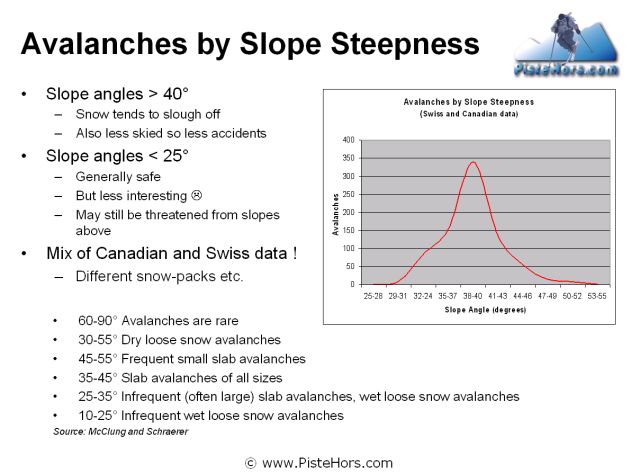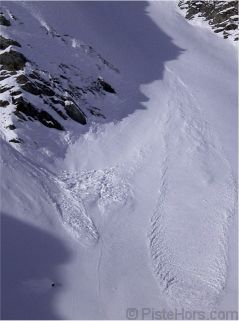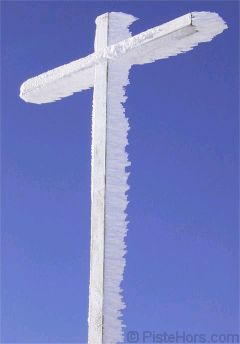
<< Crown Locations | Avalanche Avoidance | Measuring Slope Steepness >>

How do you judge the danger of avalanche terrain?
As can be seen from the diagram above most avalanches occur on slopes between 35 and 45 degrees. Slopes less than 30 degrees seldom produce avalanches and slopes steeper than about 50 degrees slough so often that they tend not to build up into slabs. So it's the intermediate slope steepness that produces most of the avalanches. But the bad news is that exactly the kind of slopes we like to ski or snowboard.

Spot Avalanche on 40 degree slope
Trees and rocks that stick up through the snow pack can help to hold it in place. But the anchors need to be dense to be effective. A thick, mature grove of evergreen trees anchor the slab quite effectively while a sparse grove of aspen trees has very little effect. Trees that provide good anchors are normally too dense to ski and of course, they will not provide protection from avalanches that start above the treeline.
Recently wind-loaded, steep slopes are almost always very dangerous while recently wind-eroded slopes are usually fairly safe. Even if you are not in the area there are many ways of judging the wind direction during the past few days.

For example ice build-up on objects forms as moisture in the air freezing on contact with the object. The ice points in the direction of the prevailing wind during the storm.
In the Northern Hemisphere as temperate latitudes, the direction a slope faces (aspect) is very important. For instance, north-facing (shady) slopes usually produce more avalanches and more persistent avalanche hazard in mid winter. On the other hand, in the spring when wet avalanches occur from strong sun, south facing slopes produce more wet avalanches. At equatorial or Arctic latitudes, the aspect with respect to the sun has very little effect.
What will happen to you if the slope slides? It's very difficult to survive an avalanche if it pushes you through thick trees or dumps you over a large cliff or deposits you into a crevasse or dumps you into a narrow gully (creating a very deep burial). On the other hand you have a fairly good chance of survival on a small avalanche path, without obstacles and a gentle run-out.
The 25° point is time to check the transceivers, to spread out, possibly dig a snow pit; time to have a chat about avalanche safety and rescue plans and maybe time to think about making a U-turn.